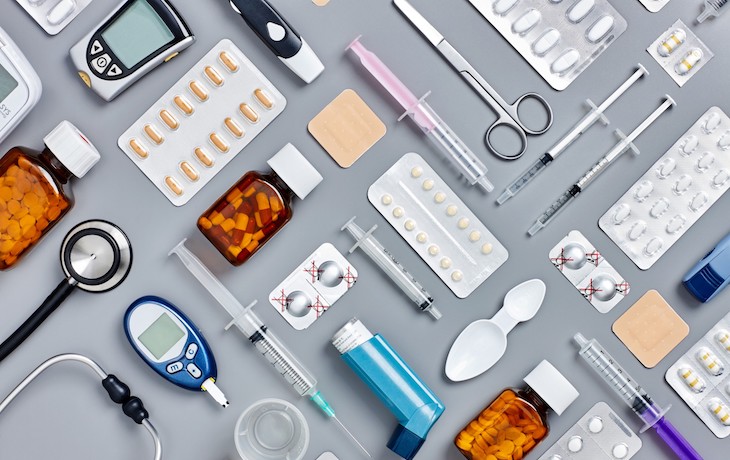This guide covers the medical supplies you should keep in your home for situations ranging from daily-life boo boos to long-term “we’re on our own” emergencies.
Having the right stockpiles (and knowledge) can save you serious money by avoiding unnecessary trips to professional care. We see people every day who spend hundreds or thousands of dollars on a problem our grandparents would’ve correctly handled in 10 minutes at home with $5 in supplies. You’ll also worry less about the “what ifs” and have more confidence when medical problems inevitably pop up.
You should start with the smaller individual first aid kit checklist before adding these “sits on a shelf” home supplies.
The small kit is for the portable gear many people keep in their emergency go-bags. Even though beginner preppers should focus on the home before focusing on evacuation scenarios, the small kit is a great place to start for medical supplies because:
- it should always be kept in your home anyway (waiting to evacuate) and thus is nearby when you need it around the house,
- it focuses on the most critical and common problems,
- it’s already packed in a convenient “grab it and take it to the patient” pouch,
- many supplies are bought in bulk, so you can take out what you need for the small kit (eg. 12 Band-Aids) and leave the rest for your home supplies.
Your home supplies have a huge advantage over the portable kits because you aren’t nearly as constrained by the space and weight of what can be carried on foot.
That flexibility comes with a risk, however, because it’s easy to get disorganized or go overboard. You still want to buy the right things in the right order and avoid wasting money on products you shouldn’t get instead of turning your basement into a hoarder’s version of the local CVS Pharmacy.
Tip: Pre-made kits are almost always junk. If you want to do it right, that means putting it together yourself.
Although you’re most likely going to use these supplies for daily-life problems with easy access to 911 or follow-on care, we do plan for situations where you’re on your own. Imagine a bad natural disaster, for example, where your kid’s broken leg or wife’s 35th-week pregnancy is not going to receive help for days.
This list is organized in modules. Products are prioritized within their grouping.
You can get the first few things in each bucket and cover the “80-20″, while the ends of the lists are for the most serious “I’m planning for a long-term collapse” kind of prep. As you get more advanced, you can also add more of the higher-priority items, such as going from two cold packs to three.
Notes about this guide:
- We assume you’ve already built your small kit and that it’s kept in your home (waiting to evacuate if needed).
- We assume you have other important preparedness items that are directly helpful in medicine, such as clean water, fire, and wool blankets.
- Normal hygiene and preventative stuff isn’t always listed for the same reason as basic gear, but we call out some specific examples like menstrual and birth control products.
- Critical items, such as chest seals and tourniquets, aren’t prioritized very highly in the home list because you’ve already got 1-2 nearby in the small kit.
- We don’t dive deep on products already explained in the small kit.
Double dipping, where you use one product in daily life and assume it’s part of your preps, is normally against the sane prepper rules because a good prep is always ready and you don’t want to wonder where your tourniquet is in a crisis.
But it’s fine to be logical and cut a few corners with these medical supplies. You definitely want a headlamp and water filter for medical needs, for example, yet it’s fine to rely on the headlamp and water filter already in your go-bag for general needs. You don’t have to carry a second headlamp for medical within the same go-bag.
We organize home medical supplies in these categories:
- General & misc
- Diagnostics
- Medications
- Bone & joint
- Cuts & soft tissue
- Burns & blisters
- Dental
- Feminine & pregnancy
Examples of other preparedness items that help with medical:
- Clean water, either stored, filtered, or purified
- Hands-free light source, like a headlamp or lantern
- Soap
- Large body wet wipes
- Hand sanitizer
- Field knife or multi-tool
- Respirator
- Eye and face protection
- Rechargeable and disposable batteries
- Ability to make fire, either with a lighter, match, or ferro rod
- Ability to cook, or at least boil water, perhaps with a portable stove
- Wool blankets
- Space heater
- Flashlight that can tightly focus a beam
- Sunscreen
- Bug spray
- Plastic cling wrap (Amazon)
- Bleach
- Off-grid fridge/freezer
General & misc:
- Z-fold gauze, 4x, 4.5″ x 4 yards (Amazon)
- Medical tape, silk, 3x standard rolls (Amazon)
- Rolled gauze, 8x standard rolls (Amazon)
- 4″ x 4″ gauze pads, 30x (Amazon)
- Cotton balls, 100x (Amazon)
- Cotton swabs, 100x (Amazon)
- Trauma shears (Amazon)
- Medical gloves, 1 box (Amazon)
- White petroleum jelly / Vaseline, 2x 7.5 oz (Amazon)
- Isopropyl alcohol 70%, 4x 16 oz (Amazon)
- Alcohol prep pads (Amazon)
- General medical reference guide (Amazon)
- Medical tape, plastic, 3x standard rolls (Amazon)
- Safety pins, 10x assorted sizes (Amazon)
- Mylar emergency blankets 4x (Amazon)
- Bag valve mask / “BVM” (Amazon)
- Nasopharyngeal airway / “NPA”, 28 fr with lube (Amazon)
Diagnostics:
- Thermometer (Amazon) ideally a digital forehead model plus an analog backup
- Writing materials: pen, permanent marker, waterproof paper (Amazon)
- Time keeping device (Amazon)
- Stethoscope (Amazon)
- Otoscope (Amazon)
- Blood pressure cuff (Amazon)
- Pen light (Amazon)
- Blood glucose monitor and strips (Amazon)
- Pulse oximeter (Amazon)
Medications:
* denotes meds that commonly need a prescription in the US
- Any personal prescriptions or condition-specific needs
- Tylenol / Acetaminophen
- Advil / Ibuprofen
- Benadryl / Diphenhydramine
- Pepto-Bismol pills
- Hydrocortisone cream
- Calamine lotion
- Aspercreme / Trolamine salicylate
- Lidocaine cream
- Drug reference guide (Amazon)
- Broad-spectrum antibiotics / Doxycycline / Bactrim *
- Honey
- Aloe gel
- Dramamine Non-Drowsy / Meclizine
- Sudafed / Pseudoephedrine
- Mucinex / Guaifenesin
- Pedialyte / Electrolyte powders
- No-Doz / Caffeine
- Afrin / Oxymetazoline
- Saline eye wash (1 quart)
- Tums / Calcium carbonate
- Pepcid / Famotidine
- Gas-X / Simethicone
- Metamucil / Fiber
- Imodium / Loperamide
- Dulcolax / Bisacodyl
- Bayer Chewable / Aspirin
- Rhinocort / Budesonide
- Backup antibiotics / Keflex / Azithromycin *
- Aleve / Naproxen sodium
- Long-acting antihistamines / Zyrtec / Allegra / Claritin
- Zinc
- Vitamin C / Ascorbic acid
- Vitamin D
- Multivitamins
- Vicks VapoRub
- Lactaid / Lactase
- Rx pain meds *
Bone & joint:
- Coban roll, 10x standard rolls (Amazon)
- Cravat / triangular bandage, 6x, large 45″ x 45″ x 63″
- ACE wrap / elastic bandage 4x (Amazon)
- Undercast padding, 12x, standard 3″ x 4 yards (Amazon)
- SAM Splint / aluminium splint, 2x, 36″ (Amazon)
- Reusable cold pack, 12x, 4″ rounds (Amazon)
- Instant cold pack, 12x, 6″ x 9″ (Amazon)
- Knee elastic brace (Amazon)
- Elbow elastic brace (Amazon)
- Ankle elastic brace (Amazon)
- Wrist elastic brace (Amazon)
- Lumbar back brace (Amazon)
- Adjustable crutches (Amazon) 1 pair for each general height range in your home
- Vacuum splint kit (Amazon) with splints for lower and upper body
- Wheelchair
- Safety rails for toilets, showers, etc.
Cuts & soft tissue:
- Band-Aid variety pack (Amazon)
- 60cc syringe with 18ga tip (Amazon)
- Tweezers (Amazon)
- Butterfly wound closures, 100x, 0.5″ x 2.75″ (Amazon)
- Steri-Strips, 32x, 1/2″ x 4″ (Amazon)
- Tincture of benzoin, 8x single-use vials (Amazon)
- Scalpel blade and handle, either disposable or reusable, 6x blades (Amazon)
- Abdominal (“ab”) pads, 10x, 5″x 9″ (Amazon)
- Dermabond / tissue glue, 2x, 0.5 oz (Amazon)
- Kelly forceps (Amazon)
- Tissue forceps (Amazon)
- Magnifying glass
- Toothbrush, separate from the dental kit brush
- Suture thread and needle, needle driver, and fine scissors (Amazon)
- Medical stapler and staple remover, 2x (Amazon)
- Tourniquet 2x (Amazon)
- Pressure bandage 4x (Amazon)
- Celox-A hemostatic agent with applicator (Amazon)
- Chest seals, 2 pairs (Amazon)
Burns & blisters:
Dental kit:
- Disinfectant mouthwash (Amazon)
- Dental wax (Amazon)
- Orajel (Amazon)
- Dental mirror (Amazon)
- Where There Is No Dentist reference guide (Amazon)
- Clove oil (Amazon)
- Dental explorer / sickle probe / No. 23 explorer / shepherd’s hook (Amazon)
- Michigan O probe
- Naber’s probe
- Paper clips
- Dental cement (Amazon)
- Extraction forceps (Amazon)
Feminine hygiene, menstruation, and pregnancy:
- Menstrual pads and/or tampons
- Monistat
- Birth control: condoms, pills, patches, and/or diaphragms
- Pregnancy test (4x)
- Plan B / emergency contraception (2x)
- Midol
- What To Expect When You’re Expecting or similar book for parents (Amazon)
- Midwife reference guide (Amazon)
- Prenatal vitamins
- Suction bulb (Amazon)
Common items to avoid:
- Decompression needles / “chest darts”: You don’t have the training or equipment to properly use these needles commonly found in military settings.
- Sleeping pills: Most OTC sleeping meds are just antihistamines — literally the exact same pill as something like Benadryl, just with different packaging and pricing. Anything beyond that needs a prescription.
- Smelling salts: Falling out of favor among pros because it delays doing a good assessment, and if a patient’s brain shut down, there’s probably a reason you don’t want to override.
- Neosporin / triple antibiotic ointments / Neomycin / Bacitracin: Studies show these topical creams don’t actually add much value beyond using plain petroleum jelly.
- Strong anti-constipation meds: The risk of dehydration and straining isn’t worth the value in most survival situations.
- Cough lozenges: No clear evidence that they have any positive effect, and a recent study found that heavy use of cough drops (especially those with menthol) actually make things worse.
- Plaster and cast-making: If you’re in a situation where you’d make your own cast, you’re also in a situation without X-rays, and there isn’t much value in making a cast for a busted bone you can’t see / fix.
- Surgical tools, intubation kit, surgical airways (crich), etc.: We may do an article specifically on these advanced tools (let us know in the comments if you want it), but this gear is far too advanced and unlikely to ever be used by most people.
Use your head. Get professional help if you can.
The Prepared teaches survival medicine: what to do in emergencies when you can’t depend on normal help or supplies. How to make decisions, steps to take, gear to use… there’s a huge difference in the right answers between daily life and a survival situation.
You agree not to hold us responsible if you choose to do something stupid anyway.
Want more free guides from medical and survival experts delivered straight to your inbox?
Why you can trust us
While you should be skeptical of any medical lists and advice on the internet — there is a ton of bad info out there — your three guides have 62 years of combined, relevant experience:
Use, rotate, resupply
Your home medical supplies are a great example of the “stock what you use, use what you stock” model used by preppers.
For example, one of us depends on daily Excedrin Migraine. We don’t ever want to run out, and we want to have multiple year’s worth of that medicine in case SHTF.
A different kind of emergency popped up when Excedrin Migraine was temporarily taken off the market in 2012. People were searching and begging, spending hundreds buying rare second-hand bottles that normally went for $10. But we didn’t miss a beat because we had multiple year’s worth of that product on our basement shelf.
When we need a new bottle for daily use, we take the oldest box off the shelf and move it to our daily medicine cabinet, then buy a new box, write the date directly on it, and put it at the back of the line. If one bottle generally lasts for six months of use and a bottle doesn’t expire for five years, we can easily have 10 or more bottles on the shelf, waiting to be used.
The line between fantasy and reality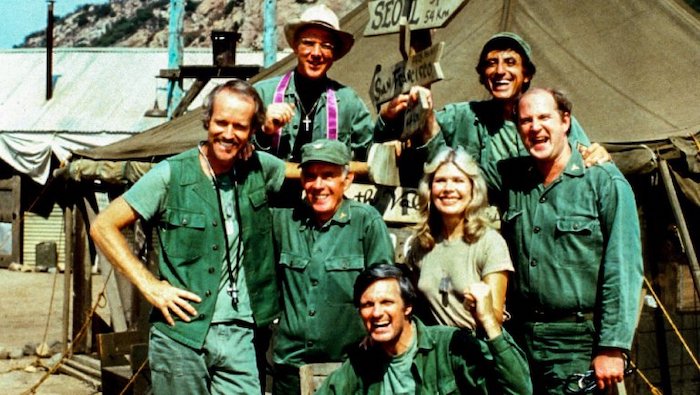
One of the most frustrating parts of prepping is when you can imagine a realistic scenario but can’t really do much to prepare for it.
Medicine is a prime example. Whether someone needs surgery, kidney dialysis, or constant life-saving prescriptions, there’s just a practical limit to what 99.9% of people can do and prepare for without breaking laws (namely around prescriptions) or spending years in medical school.
Sometimes the only answer to a medical emergency in a SHTF scenario is “make them comfortable and say your goodbyes” — as much as that may suck to accept for those of us who want to prepare for anything.
So it’s important to keep the realistic big picture in mind. Even if you’re a serious prepper thinking about the long term, the reality is you won’t be performing major surgery or running a Wasteland M.A.S.H. Clinic bartering for Nuka-Cola caps.
General & misc
Gauze comes in different forms — each with pros and cons that together make a well-rounded medicine cabinet. For example, z-fold gauze (also known as s-rolled gauze) is normal gauze packaged like an accordion, which makes it easy to deploy with one hand without the whole roll unraveling onto the ground.
Some gauze is impregnated with a “hemostatic agent” that helps control bleeding in less time. It usually shaves about two minutes off the 10 minutes of pressure you’d normally use. It’s fine to upgrade to an impregnated gauze, but the extra cost and marginal benefit make it optional. You also don’t want to waste your expensive clotting gauze on tasks that don’t need it.
People often underestimate how much gauze to have on hand. You can go through many yards of gauze on just one seemingly-small wound. So don’t be shy about stocking up, since you have much more room in your home supplies than the small kit.
Tip: Even if you buy gauze in bulk, try to find boxes with gauze packaged in smaller sub-packets so you can use what you need and keep the rest of your supplies sterile over time.
Cotton balls and swabs are generally handy and versatile, plus they save you from wasting precious gauze. Cotton balls, for example, are used with the dental kit to deliver clove oil medication, while cotton swabs are great for removing petroleum jelly without contaminating the container.
Medical gloves. Unlike the smaller kits, where we deprioritize gloves due to the limited space, it’s a good idea to pick up a box or three. They’ll last you a long time. You can get boxes of different sizes or just buy large.
White petroleum jelly (eg. Vaseline) is invaluable in part because it’s a simple, cheap product with tons of medical uses ranging from general nuisance stuff like cracked lips or dry nostrils to serious issues like relieving pain from a burn. Buy larger tubs than what was in the smaller kit.
Isopropyl alcohol and alcohol prep pads generally aren’t included in small kits, but are clearly worth the space and cost in your home supplies so you can sterilize equipment and wipe down the area around a wound. We like having both a bottle and single-serve pads so you can dip, pour, or swipe depending on the need.
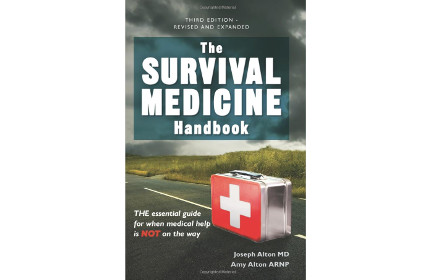
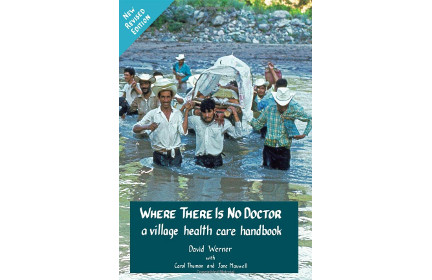
General medical guides are a must for anyone who wants to prepare for serious situations. The Survival Medicine Handbook is written by a doctor-nurse husband and wife prepper duo, while Where There Is No Doctor (a compliment to Where There Is No Dentist in the dental kit) is written by experts who volunteer in remote areas. Both are on the popular prepper books list.
Silk medical tape was included in the small kit and we encourage picking up more for your shelf. We add plastic medical tape further down the list as a compliment for long-term prepping because it sticks to wet/oily/dirty skin better than silk. Paper medical tape also sticks better than silk, but it’s falling out of favor among doctors because some people are allergic to paper tape and it doesn’t last as long.
Warning: Everyone loves duct tape, but try to avoid using it on skin for medical purposes — it often does more harm than good.
Bag valve masks (BVM) are recognizable as the big squeeze bag held over a patient’s mouth by EMTs in movies. BVMs provide “positive pressure ventilations”, a fancy way to say “forces air into the lungs.” Although mouth-to-mouth breathing isn’t part of the official CPR guidelines anymore, there are still situations where you want to assist someone’s breathing. These bags make it easier.
Diagnostic equipment
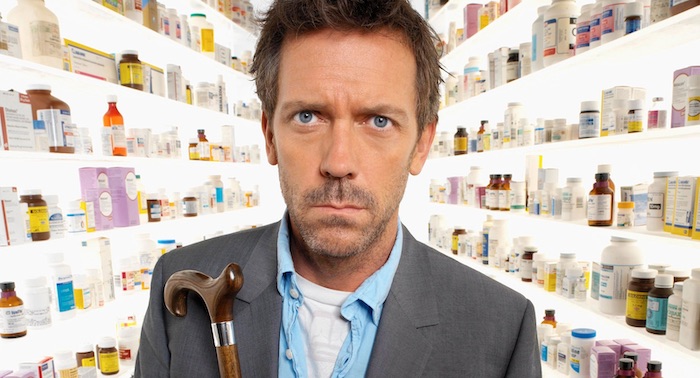
The popular TV show House wouldn’t exist if medicine were a simple black-and-white “plug in the data and you’ll know the answer” algorithm. That’s why getting a second opinion is a thing and why it’s called “practicing medicine.”
You can get by without any diagnostic equipment when you’re in the field with limited supplies. But having a few tools and resources at home is great because they help you understand the difference between symptoms that might seem similar on the surface — such as heat exhaustion vs. fever from fighting off an infection — which also conserves your supplies through more targeted treatment.
Thermometers are the #1 diagnostic tool because using your hand to judge body temperature is decent for a quick check, but that won’t give you accurate data (especially from very young or old patients) and makes it almost impossible to track changes in temperature over time. We like “temporal” thermometers that you swipe across the forehead — they’re accurate as long as you don’t buy a cheapie from the dollar store.
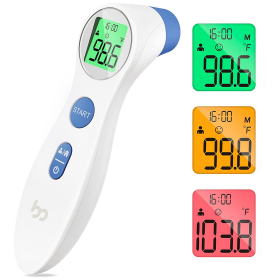
Touchless Digital Infrared Thermometer
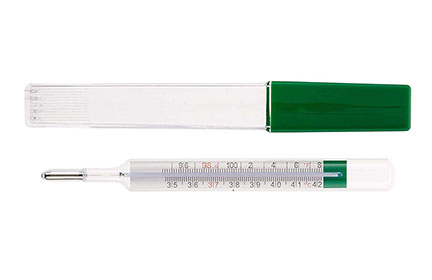
Mercury-Free Oral Glass Thermometer
Keeping time makes it much easier to measure heart and respiration rates, keep track of medication doses, decide when something becomes critical enough to call 911, know how long a tourniquet has been applied, etc. Try to have something with the current time, stopwatch functionality, and a countdown timer. Digital kitchen timers are nice because they often use standard AA/AAA batteries (rather than an odd watch battery) or may even be solar powered.
Learn how to use a tourniquet and why keeping track of time can help save a limb.
Note keeping is also critical so you can keep track of data, what meds you gave when, and so on. Any notepad is better than nothing, but try to pick up a small waterproof notepad in addition to the Sharpie marker and normal pen.
Stethoscopes make it much easier to hear what’s going on inside the lungs, heart, and gut. They’re also required when using a manual blood pressure cuff. The difference between a cheap stethoscope and a quality one is the sound resolution. With a cheap product, you’ll only hear basic sounds (or the lack of them). Higher-end products transfer finer details, such as an irregular heartbeat, but something like this $150 Littmann Cardiology Stethoscope is overkill.
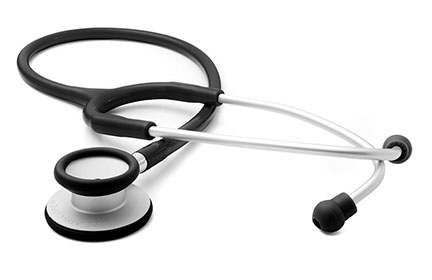
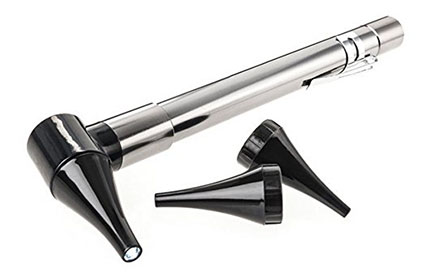
Otoscopes are the gadget your doctor uses to look in your ears, nose, and throat. The most common use for civilians is checking the ear canal for signs of infection or obstruction.
Blood pressure cuffs are strongly recommended if you or someone you love has high blood pressure (hypertension), and a nice-to-have for everyone else. Since the cuff is usually wrapped around the upper arm, buy a size that can handle the largest person in the household. Cuff extenders are available for the largest folks. You can buy a digital blood pressure monitor if you’re thinking about less serious emergencies, or a manual unpowered cuff for long-term SHTF.
Tip: Blood pressure cuffs can also act as a temporary tourniquet.
Pen lights are helpful when you need a tight, focused beam to check specific areas. For example, you can check for brain injuries from trauma or toxins by checking pupil dilation. Or you can check deeper in the ear canals and nostrils.
Tip: A handheld flashlight is usually too intense and/or can’t make a narrow-enough beam. But if you have such a light, you can skip the separate pen light.
Blood glucose monitors (BGM) are a must for diabetic households because they measure the amount of sugar in the blood. If your family has a history of diabetes, obesity, or you just generally want to prepare for long-term collapse, pick up an all-in-one BGM kit that comes with the reader, strips, and lancets. BGMs are also helpful to diagnose mental status. For example, if someone is barely responsive, you can check if it’s a low blood sugar issue before deciding on next steps.
Tip: Be aware that test strips have an expiration date (typically 1-2 years) and will become less accurate over long periods of time. Some BGM models (like Accu-Chek) won’t read expired strips without some hacking.
Pulse oximeters measure oxygen saturation in the blood. This tool is particularly important for people with COPD, asthma, and other respiratory issues. A low reading would cause you to give supplemental oxygen, move the patient to a lower altitude, or simply order them to rest.
Essential medications list
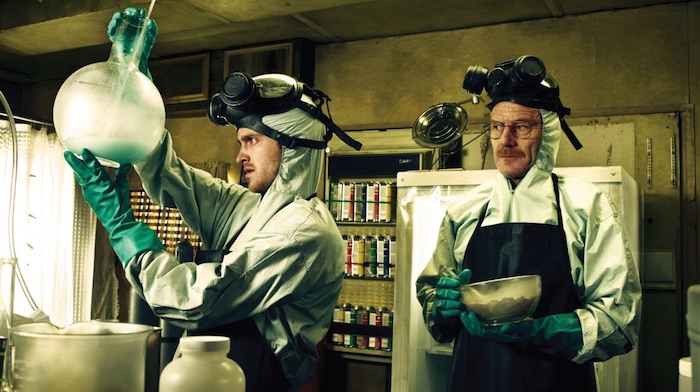
Many of the OTC medications you recognize from advertising (eg. NyQuil, Excedrin, Midol) are just different combinations of core ingredients like caffeine, acetaminophen, and diphenhydramine.
You can decide to stock just those core ingredients to mix your own cocktail for each situation. Or you can buy the scenario-specific meds like NyQuil to keep it simple and ignore the mixology.
We have to say it: Follow your doctor’s advice and don’t be stupid with medications. Allergies, abuse, and weird interactions are a real risk (although we try to pick the most universal drugs possible).
Prescriptions and condition-specific meds like epinephrine, glucagon, and inhalers. Stockpiling prescriptions is for a separate article — for now, what’s important is to think through if you have diagnosed conditions that can flare up into a real problem, or if you want to keep some of these common emergency meds on hand just in case.
People with severe allergic reactions often need epinephrine (a form of adrenaline) within a few minutes. Auto-injectors (eg. EpiPens) are all-in-one products that have received a lot of attention recently as an example of American healthcare costs run amok — a single EpiPen can cost $400. As a result, the community is working on cheaper and DIY alternatives.
It’s more economical to stock a vial with multiple epi doses that you draw into a separate syringe. It’s not as easy as an auto-injector, but it will only take a few minutes of practice during your annual preparedness review. A multi-dose vial and syringes cost around $30.
Diabetics are usually prescribed glucagon to keep around as a last-ditch rescue if they fall into shock caused by low blood sugar. This would immediately be followed by a call to 911, but if you can’t reach help, you’ll want some sugar on hand for when they wake up.
Rescue inhalers (albuterol) are another no-brainer for households with someone diagnosed with asthma. A lot of time and money is wasted by people calling 911 simply because they forgot to keep an inhaler around.
Prescription painkillers like Vicodin and OxyContin are a sensitive subject, mostly due to their addictive qualities and how that’s lead to a crisis in the US. But they can be helpful for this kind of emergency preparedness, and people will pursue them anyway, so all we can say is that many preppers will (securely) store any leftovers they run across.
Antihistamines (eg. Benadryl) are included in the small kit and a core part of any medicine cabinet because they’re safe, common, and help a wide range of problems. Although most people know antihistamines combat allergies, for example, you may be surprised that most OTC sleep aids are the exact same thing — 25 or 50 mg of diphenhydramine, the same active ingredient and dosage as Benadryl.
Long-acting antihistamines such as Zyrtec, Allegra, and Claritin are included towards the bottom of the list because antihistamines are one of the few categories that become less effective over time if you continually take the same medicine. So long-term preppers might want to diversity their antihistamines beyond just Benadryl with these slightly-different meds.
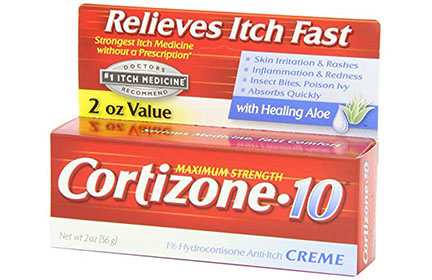
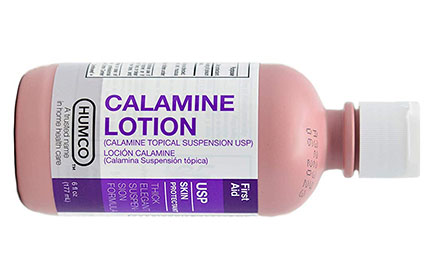
Hydrocortisone cream and calamine lotion treat itching from rashes, bug bites, and toxins like poison oak/ivy. Hydrocortisone cream is best for small localized areas, while calamine is better for covering large areas.
Aspercreme and lidocaine cream are topical analgesics that can reduce pain in a localized area. Aspercreme is commonly used for arthritis, sprains, and back aches. Lidocaine is found in products like Burn Jel and can be used as a numbing agent prior to performing wound closures. We include both because Aspercreme is better for large and/or deeper areas (like a back ache), while lidocaine is better for targeted surface pains.
Note: Lidocaine comes in OTC and prescription forms with 5% and 10% of the active ingredient, respectively. The 5% OTC is fine.
Drug reference guides are a no-brainer, especially for those times you don’t have the internet to figure things out. We like the Tarascon Pocket Drug Guide.
Antibiotics are tough because they’re very useful for preppers but require a prescription and are not as universal and you might believe. Years ago we would’ve chosen Keflex (Cephalexin) and Zithromax (Azithromycin) as the best option to stock on your shelf. But they’ve become less effective over time due to antibiotic resistance and abuse, so they’re towards the bottom of the list for long-term prep backups.
Doxycycline and Bactrim are the two main antibiotic choices we’d recommend for any shelf. They still pack a punch, yet they’re common, apply to a wide range of broad-spectrum problems, and are generally tolerated by most people. Bactrim is the current go-to for treating MRSA Staph infections, for example. The oft-repeated fear of doxycycline becoming toxic when it expires is no longer an issue: The FDA states “testing of the medicine found it is safe to use past the expiration date.”
Honey and other sugars (eg. cake frosting). Honey is wonderful. It doesn’t expire, reduces inflammation, naturally keeps the right level of moisture in a healing wound, soothes sore throats, and has natural antibacterial properties similar to hydrogen peroxide. Honey is also a common go-to when hypoglycemics need a sugar hit. Cake frosting and other shelf-stable forms are helpful for low-blood sugar too, but you won’t be spreading frosting on a wound. Glucose tabs are a proper medical form of sugar in squeeze tubes or tablets of different flavors.
Meclizine (Dramamine Non-Drowsy) and Dimenhydrinate (Dramamine) reduce nausea. It’s commonly used for motion sickness, which could be helpful when evacuating in unpleasant conditions. Most people prefer the non-drowsy formula, but it’s generally not given to kids under 12. Standard Benadryl is a decent substitute for children.
Pseudoephedrine (Sudafed) is a decongestant used to relieve stuffy nose and sinus pain/pressure. You’ll provide an ID when purchasing because it’s a controlled ingredient often abused when Breaking Bad.
Guaifenesin (Mucinex) is an expectorant that helps loosen mucus in your chest and throat, making it easier to cough out.
Electrolytes are an important part of keeping the body in balance. Products like Gatorade, Emergen-C, and Pedialyte replenish salts and electrolytes lost through sweating, vomiting, diarrhea, or even just weird diets common during emergencies. Regular food is always the best method, but powdered products are a great addition to medical supplies — try to avoid the “sports” versions like Gatorade, though, as they’re too sugary and need to be diluted.
Oxymetazoline (Afrin) and Budesonide (Rhinocort) are decongestant nasal sprays. Afrin works by shrinking blood vessels and membranes in the nose, but it will create more congestion if used for more than a few days. Rhinocort is a steroid spray that takes several days before it starts relieving symptoms — that’s why we include both meds. Rhinocort is usually better tolerated than Afrin, but it can’t be used on kids under six.
Calcium Carbonate (Tums) and Famotidine (Pepcid) are antacids that treat heartburn. Tums is used for acute symptoms of heartburn, while Pepcid is a daily medication for reducing acid (though it should not be taken for extended periods of time.) If you suffer from heartburn, the best solution is to learn which foods trigger you, avoid those foods, use Pepcid when you’re more likely to be triggered and can’t avoid it (eg. in the chaos after a natural disaster), then use Tums as needed.
Simethicone (Gas-X) is an anti-foaming product that reduces bloating and gas. We prefer it over aspergillus niger (Beano), an enzyme that breaks down gas causing carbohydrates because Beano doesn’t help with gas caused by lactose or fiber.
Fiber (Metamucil) and Bisacodyl (Dulcolax) help with constipation. In addition to staying well hydrated, fiber is the best overall choice to help unplug the gut as it can be used for longer periods of time. Dulcolax works by causing the intestines to squeeze to get things moving, but should only be used to treat severe constipation because it can drain nutrients like potassium.
Zinc is a supplement shown to reduce the length of colds. It’s also helpful for alcoholics and pregnant women (although it’s included in prenatal vitamins). A side effect is that it cannot be taken long term without depleting other minerals.
Vitamin C is known as a general boost for immune system health (especially when combined with zinc). The big value for preppers is that vitamin C prevents scurvy, which can start in as little as a month when you don’t have enough vegetables in your diet. That’s why ancient sailors would eat lemons or oranges while at sea.
Vitamin D is an important fat-soluble vitamin that isn’t naturally found in many foods. Normally, your body will convert cholesterol into vitamin D when exposed to the sun — but sun exposure might not be possible in an emergency. Vitamin D deficiency can cause Rickets in kids and softening of the bones in adults.
Multivitamins normally aren’t worth it — so much so that the general daily use of multivitamins is on our survival myths list. The exception (and why they’re on this list towards the end) is long-term SHTF scenarios without fresh food.
Vicks VapoRub is a topical ointment that can ease congestion and coughing associated with colds and allow for better sleep. It’s particularly good for houses with kids under two, as a 2010 study noted that children with coughing and congestion slept significantly better with Vicks.
Lactase (Lactaid) is an enzyme that helps people process foods containing dairy. If you’re lactose intolerant or just generally dislike dairy, you may want to have some Lactaid on hand in case SHTF and you’re forced to revert to eating dairy. You won’t be able to stockpile enough to last indefinitely in that situation, but it can help ease the transition as your body adjusts.
Bone & joint
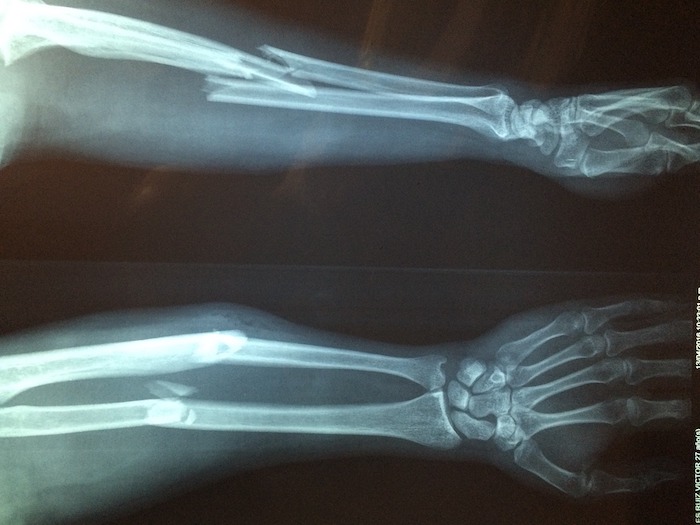
Undercast padding is a soft material that goes between skin and splints/casts/braces to keep things comfortable and reduce friction sores. It’ll hold up better than other materials and saves you from wasting gauze. It’s particularly helpful for hacky MacGyver splints, which might be necessary in a long-term emergency but aren’t as smooth or well-designed as a proper splint.
Reusable cold packs are a no-brainer. Even though you’ll need power to freeze them outside of cold winter months, it’s a cheap- and useful-enough purchase to throw in. Smaller packs are easier to place and will refreeze more quickly, but that means we stock at least 12 so we can use and rotate/refreeze. Instant cold packs are a nice compliment because they work instantly without the need for external cooling, although they only last about 15 minutes before trashing.
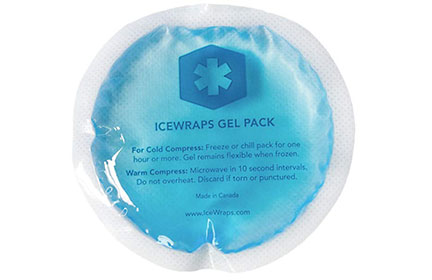
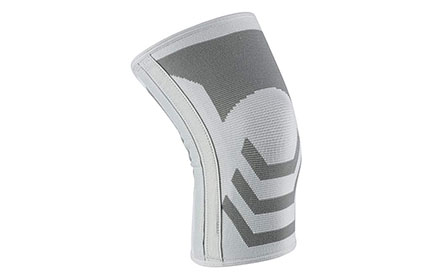
Generic soft braces for knees, elbows, ankles, and wrists. These common $10-$20 elastic/neoprene braces won’t do much to solve a serious issue, but they’re cheap enough to be worth it for general joint pain relief and stability. If you already have a troublesome joint, or worry about aging or general sprains in a long-term crisis, pick up one or a pair for each joint.
Lumbar back braces are worn during manual labor, especially if you are picking up heavy objects, bending over a lot (eg. gardening), and/or have a bad back. Lumbar braces are another relatively-cheap item that might go a long way during an emergency, such as stacking sandbags before and clearing debris after a natural disaster.
Adjustable crutches might make the difference between being mobile or stuck during an emergency. If you have (or might have) children, consider picking up a smaller size for them — although adjustable, there’s still a maximum range, and a crutch has to fit reasonably well to be useful. If you have to compromise, err on the side of the crutch being too short.
Walkers can be useful for more than just general shuffling around. Someone who’s injured or elderly, for example, could use a walker as a makeshift aid when using an outdoor camping shower or popping a squat over a log or in an outhouse.
Vacuum splints are the closest thing to a proper cast we’re comfortable recommending. They’re expensive and marginally useful, however, so this is clearly into the realm of long-term collapse prepping. Air splints are an alternative, but they’re more prone to breaking and can’t be used in as wide a range of areas around the body as a vacuum splint.
Wheelchairs and safety rails are another serious preps. Generic safety rails — the kinds mounted to the wall of a handicapped-accessible toilet or shower — could be installed where needed in a long-term collapse.
Cuts & soft tissue
60cc syringes, which are 3x larger than the 20cc version kept in the small kit, are great for flushing out serious wounds or vacuuming up body fluids. Buy one with an 18 gauge nozzle, which creates the best mix of water jet size and pressure.
Steri-Strips aren’t included in the small kit because they don’t always stick to skin as well as butterfly bandages. But Steri-Strips are a worthy addition to your home supplies because they do the best job at keeping wounds shut with a clean edge line, are easy to apply, and make it easy to reopen or re-clean a serious wound as it heals.
Tincture of benzoin is a highly-recommended compliment to Steri-Strips because the liquid makes the strips much stickier, especially on messy skin or in areas with high movement and tension.
Scalpel blades and handle are included mostly for tasks like trimming dead skin or opening up a drainable abscess — less so for surgery. Scalpels are incredibly sharp, very maneuverable, and come in sterile packaging (unlike a pocket knife or utility blade). We link to disposable models, which are fine, but know that if you buy reusable models they are often tricky to attach / easy to cut yourself with.
Tissue glue (Dermabond) is better than generic super glue because it’s formulated to be safer on exposed tissue and more flexible to reduce tears. Some people are too quick to slap some glue on a cut or wound — which makes it harder to reopen and clean the wound again if needed — but it’s great in a pinch and a nice compliment to the other methods in the kit. Note that these products expire after two years, and it’s a category where you want to respect the expiration date.
Kelly forceps, tissue forceps, a magnifying glass, and a separate toothbrush make it easier to clean wounds. The small kit makes do with just a small syringe and tweezers, but serious wounds or those with lots of tiny debris can be tricky.
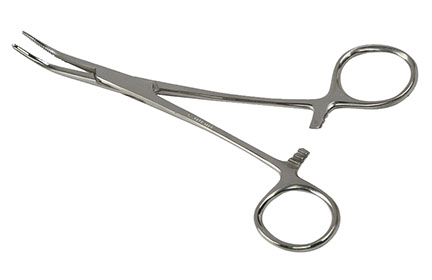
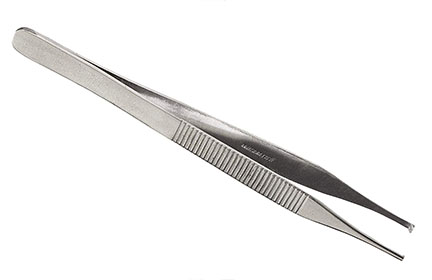
Curved Kelly forceps and tissue forceps hold onto the edge of tissue so you can lift and pull it back without using your dirty hands. The difference is that Kellys are lockable and heavier, so you can grab the surface edge of a wound and pull the flap back by letting the weight rest against skin. Tissue forceps can do the same job, but they don’t lock and are typically better for grabbing and lifting tissue deeper down in the wound.
The magnifying glass helps you see the smallest specks of contamination. A soft toothbrush, which is distinct from any you keep for your mouth, can be helpful for loosening stubborn or tiny debris that’s too difficult to flush out with liquid alone.
Suture materials: 3-0 nylon on a PS2 needle, 5-0 nylon on a P3 needle, needle driver, and fine scissors. It’s unlikely you’ll be giving stitches. And even if you have the needed training, suturing requires specialized equipment to do well.
Nylon is the best thread material. Almost all thread and needles come pre-threaded in a single package so you’re not fumbling in the moment. 3-0 and 5-0 refers to the tensile strength of the thread — we stock 3-0 for larger wounds and 5-0 for finer work (eg. on the face or hands). PS2 and P3 needles are both the recommended 3/8″ radius, just with different overall lengths.
A lockable needle driver is a specialized kind of needle-nose pliers for holding and maneuvering the needle through the tissue. The scissors are a nice-to-have but help you avoid wasting a scalpel or using a dirty tool.
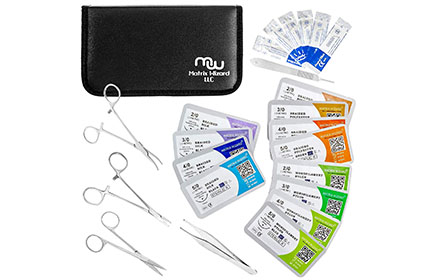
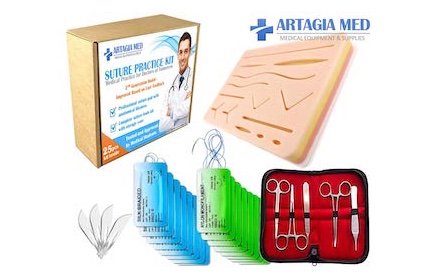
Learn how to give stitches and staples.
Medical staplers are an easier alternative to sutures, although they tend to leave heavier scaring. Because medical staples work differently than a standard office stapler, you’ll also want a medical staple remover.
Celox is a bleeding-control agent injected through an applicator (which is often included) into deep and/or narrow wounds that are too difficult to control with wound packing alone. Unlike other hemostatic agents, Celox can be easily washed out with water or saline and tends to work well on people taking blood thinners.
Extra tourniquets, pressure bandages, and chest seals are included at the end of the list because serious preppers want to have more than the one or two already included in the portable supplies.
See our reviews of the best tourniquet, best pressure bandage, and best chest seal.
Burns & blisters
Burn Jel is a thick, water-based gel that contains tea tree oil and lidocaine. It works both by creating evaporative cooling over the burn and numbing the area. You can get the same basic effect by mixing lidocaine with aloe or petroleum jelly, but if you buy separate Burn Jel, we recommend the individual packets to reduce the chance of it drying out.
Leukotape is similar to the Moleskin already discussed in the small kit list. Both products are used to cover hot spots and prevent a blister from forming in the first place. Moleskin is in the small kit because it’s also helpful after a blister has formed, where leukotape isn’t. But we add leukotape to home supplies because it’s significantly cheaper per yard and it does have some advantages as a preventative — namely, it’s thinner and slicker than Moleskin.
Dental kit
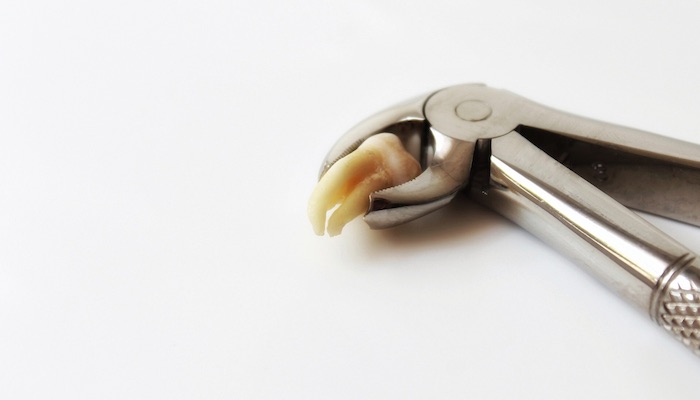
Disinfectant mouthwash would normally be in general hygiene, but we wanted to point out that not all common mouthwashes will kill bacteria. Although Listerine is a disinfectant, many products can be sold as a mouthwash even though they only mask odor.
Dental wax is commonly used to make braces more comfortable, but you can also cover a broken tooth or exposed nerve. You can DIY this by using candle wax that has cooled enough to not cause pain but is still warm enough to be moldable. That hack is harder to remove later than proper dental wax, but will work in a pinch.
Orajel and clove oil help with oral pain. Orajel is a numbing, gel-based medication that does a surprisingly decent job as an OTC pain med, including for canker sores and other soft-tissue problems. Clove oil is a natural remedy that works particularly well for toothaches, often mixed with a little bit of olive oil and applied with cotton balls.
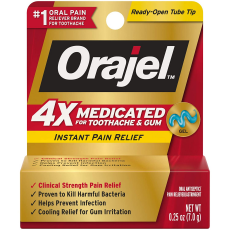
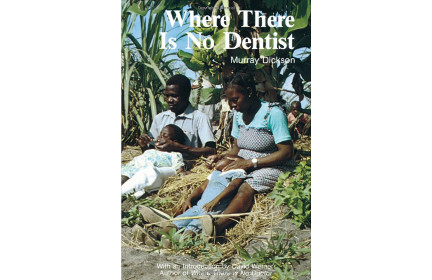
Where There Is No Dentist reference guide. The popular classic (and part of our best survival books list) is written by western-educated experts who treat dental problems in third-world countries with limited supplies and help.
Dental kit: dental mirror, dental explorer, Michigan O probe, and Naber’s probe. Dental kits are one of the only categories where it’s worth buying a pre-made kit if you’re starting from scratch. You can pick up individual pieces like a dental mirror — the highest priority item — or buy this Dental Duty Oral Care Kit that includes the core set of tools. You might see the common dental explorer referred to as a sickle probe, #23 explorer, or shepherd’s hook. The two probes are both used for measuring periodontal pockets.
Dental cement is used to re-anchor a crown or similar restoration. It’ll do an okay job for long-term collapse, but it’s intended to be a temporary solution until you get to the dentist for a permanent fix. You can DIY a dental splint (like a hacky form of braces) with dental cement and paper clips.
Extraction forceps are for pulling teeth. It’s not a pleasant procedure — unless you’re Ron Swanson.
Menstruation & pregnancy
Menstrual pads and tampons are another example that would normally be in general hygiene, but it’s important enough to call out twice. Although you should go with the product that you’re most comfortable with, we slightly recommend pads over tampons because there’s always a small risk of damage or infection when you’re inserting a foreign object. Pads are also more useful than tampons for MacGyver DIY hacks. No, tampons aren’t good for plugging bullet holes — that’s a survival myth — but both pads and tampons can do general absorption duty or be used as fire tinder.
Miconazole (Monistat) is an antifungal medication used to treat vaginal yeast infections, although it can also treat oral thrush, diaper rash, ringworm, athlete’s foot, and jock itch.
Birth control, pregnancy tests, and emergency contraception might be nice to have on hand during long-term emergencies. Data shows that unplanned pregnancies tend to spike during those kinds of periods (eg. an extended blackout) because people have nothing better to do. Regardless of personal beliefs, many people who would otherwise prefer to have a child during normal times might feel differently when faced with a long-term crisis.
Midol is mostly a cocktail of acetaminophen, caffeine, an antihistamine, and (in some versions) naproxen. Midol also has some extra ingredients that can help with cramping and shedding, which gives it a slight edge over just mixing the basic cocktail yourself.
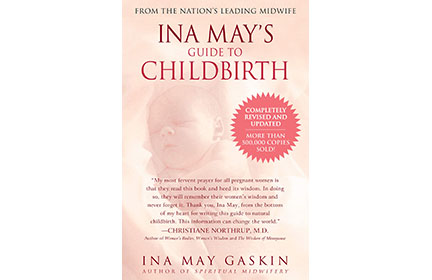
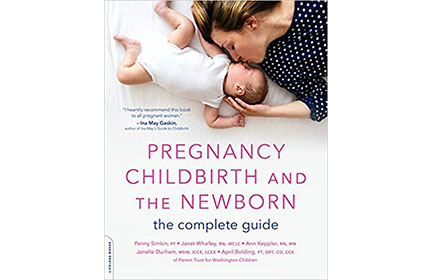
Reference books for parents and midwives will go a long way to ease your anxiety during an emergency (which in turn keeps things healthier), and they might actually come in handy before, during, or after childbirth. If you only get one book, we’d rather pick a generalized book written for parents — but serious preppers should add reference material for the actual delivery process. Ina May’s Guide to Childbirth is highly rated, but no matter what you choose, you want something that deals with “natural” births (since you won’t have a hospital) without crossing the line into woo-pseudoscience.
Prenatal vitamins are taken during pregnancy to help ensure that both the mom and baby receive adequate vitamins and minerals. Prenatal vitamins should include at least 400 mcg of folic acid and 30 mg of iron to help protect against neural tube defects and anemia.
Suction bulbs are used during childbirth to clear the amniotic fluid out of a child’s mouth/throat/nose so they can start breathing air. That’s a normal part of the birthing process, but it can also help in an acute emergency where there’s too much blockage and the baby is in trouble — in fact, one of the people working on this article was born close to death and a suction bulb helped save their life (in addition to an adrenaline shot).
